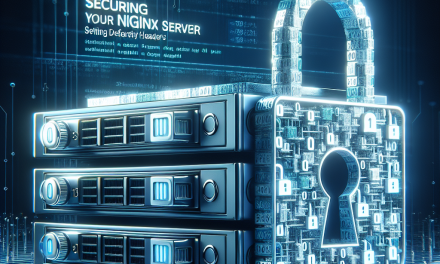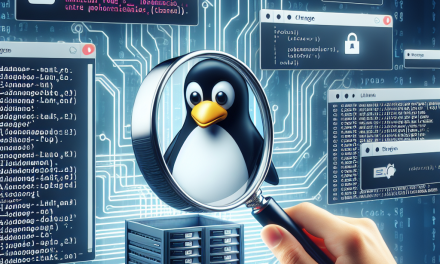In today’s fast-paced software development environment, Continuous Integration (CI) and Continuous Deployment (CD) have become essential practices for delivering high-quality software rapidly. However, the rise of CI/CD workflows also brings security challenges. As organizations move towards automation, it is crucial to ensure that these pipelines are secure to prevent vulnerabilities and potential breaches. In this article, we will explore best practices for securing CI/CD workflows on Linux servers.
Understanding the CI/CD Pipeline
Before diving into security practices, it’s important to understand what a CI/CD pipeline comprises:
- Source Control: Code is stored and versioned in repositories like Git.
- Build Stage: Code is compiled and packaged.
- Test Stage: Automated tests verify the integrity and functionality of the code.
- Deployment: The application is deployed to production or staging environments.
Each of these stages can be a target for attackers, making security an integral part of the CI/CD pipeline.
Best Practices for CI/CD Security on Linux Servers
1. Establish a Security Policy
Start by defining a clear security policy that addresses the entire lifecycle of your CI/CD workflows. This policy should outline roles and responsibilities, acceptable usage, and incident response strategies.
2. Use Secure Source Control Practices
- Limit Repository Access: Ensure that only authorized personnel have access to your source code repositories. Implement role-based access and review permissions regularly.
- Enable Two-Factor Authentication: Enhance security by enabling two-factor authentication (2FA) for accessing repositories.
- Use Signed Commits: Require developers to use GPG-signed commits to ensure authenticity.
3. Secure Build Environments
- Isolate Build Environments: Use containers or virtual machines to isolate build environments, reducing the risk that a compromised build affects other parts of your system.
- Use Trusted Base Images: Ensure that any base images pulled from public registries are from trusted sources and regularly scanned for vulnerabilities.
4. Implement Secure Coding Practices
Make sure that developers are aware of secure coding guidelines and best practices. Use automated scanners to check for common vulnerabilities, such as SQL injection and cross-site scripting (XSS).
5. Automate Security Testing
Integrate security testing tools within your CI/CD pipeline:
- Static Application Security Testing (SAST): Analyze source code for vulnerabilities before it’s built.
- Dynamic Application Security Testing (DAST): Test the running application for vulnerabilities during QA.
- Dependency Scanning: Regularly scan your dependencies for known security vulnerabilities using tools like OWASP Dependency-Check.
6. Control Secrets and Credentials
- Use Environment Variables: Store sensitive information like API keys and passwords as environment variables, keeping them out of source code.
- Secret Management Tools: Utilize dedicated secret management tools such as HashiCorp Vault, AWS Secrets Manager, or Kubernetes Secrets to handle sensitive data securely.
7. Audit and Monitor CI/CD Activities
- Enable Logging: Ensure that all actions within your CI/CD pipelines are logged. This will help you track who did what, making it easier to identify and address potential security breaches.
- Integrate Monitoring Tools: Use monitoring tools to detect unusual activities in your CI/CD pipeline, such as unauthorized access attempts and system resource utilization anomalies.
8. Regular Updates and Patch Management
Keep all software, including the operating system, CI/CD tools, and dependencies, up to date. Implement a regular patch management process to minimize vulnerabilities.
9. Conduct Regular Security Audits
Periodically assess your CI/CD pipeline’s security posture through vulnerability assessments and pen-test evaluations. Use the findings to update your security policy and practices accordingly.
10. Educate Your Team
Security is a collective responsibility. Regularly train your team on security best practices, new threats, and the importance of maintaining secure CI/CD workflows.
Conclusion
Securing CI/CD workflows on Linux servers doesn’t have to be daunting. By implementing these best practices, organizations can significantly reduce vulnerabilities and enhance the security of their software development processes. Remember, security is a continuous journey, not a one-time task. Consistently revisit and adjust your security strategies to adapt to the ever-evolving threat landscape.
The importance of securing CI/CD pipelines cannot be overstated in today’s software development era. With careful planning and ongoing vigilance, you can build a robust CI/CD workflow that not only delivers quickly but also securely. Happy coding!





